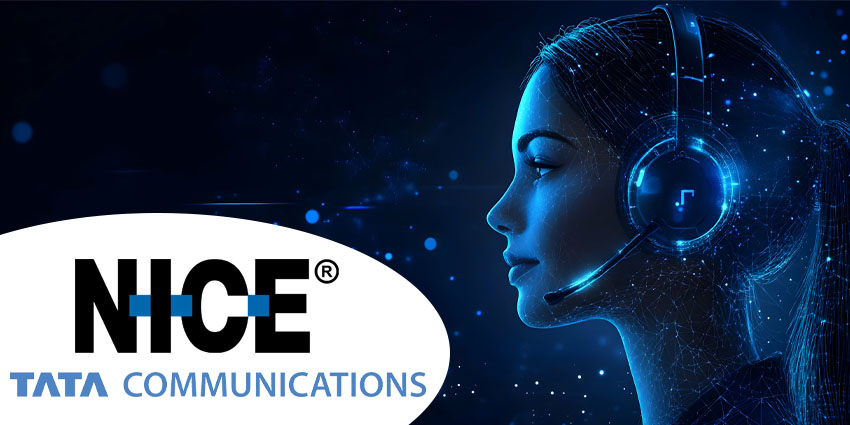The modern contact center is going through substantial changes.
AI is transforming how calls are handled, customers are routed, and supervisors analyze calls to improve customer service. However, just as AI is being used for positive purposes, it is also being weaponized by bad actors.
Recent data from TNS reveals that 9.8% of all inbound voice traffic to enterprises is now classified as threatening.
The volume of malicious activity is so high that the benefits delivered through AI optimization risk being offset by the disruption these threats cause.
Using AI, fraudsters are deploying increasingly sophisticated tactics against contact centers—from voice cloning to coordinated multi-channel attacks that overwhelm both systems and agents simultaneously. Traditional safeguards are struggling to defend against these advanced threats.
To understand how these attacks are unfolding and what companies can do to combat them, we spoke with Maurie Munro, Vice President of Enterprise Sales at TNS Communications, about the evolving landscape of voice fraud.
Why Contact Centers Have Become Prime Targets
The pivot in attacker strategy toward contact centers represents a calculated evolution in cybercrime. While network breaches remain a danger, criminals have learned that exploiting human vulnerabilities often offers a faster and more reliable path to success.
As Munro explains, “It’s harder to hack a network than it is to hack a person.”
Contact centers are particularly vulnerable due to their concentrated human presence. Thousands of service agents process sensitive account information every day, making them prime targets for social engineering.
These attacks aim to reach agents and trick them—often through AI-powered voice cloning—into giving away customer data. This information is then combined with other stolen datasets to increase credibility in future scams, ultimately enabling crimes such as financial fraud.
“Data environment breaches are often leveraged by bad actors to craft personalized follow-up calls, making them appear more legitimate to both agents and customers,” Munro says.
These schemes depend on reaching a live agent. In the past, IVRs were a first line of defense, filtering out spam. Yet attackers now bombard contact centers with massive call volumes, developing ways to bypass IVRs and increase their chances of connecting with a person.
They also orchestrate coordinated campaigns across multiple channels simultaneously, using AI and social engineering to create confusion and urgency.
“TNS is also seeing multi-pronged attacks that use SMS, email, and voice together—often enhanced by AI and social engineering—as fraudsters attempt to overwhelm individuals and confuse agents,” Munro notes.
This sophistication has made many traditional defenses ineffective. New attack methods demand a fundamental shift in security strategy. A zero-trust framework—which treats every call as unverified until proven otherwise—has become essential rather than optional.
Real-Time Verification: How It Changes the Game
A zero-trust approach acknowledges that traditional phone system security no longer suffices in an era when caller IDs can be spoofed, voices can be synthesized, and social engineering is increasingly complex.
In response, TNS developed Enterprise Voice Security, combining two complementary elements: Voice Firewall and Inbound Authentication.
The system assigns each incoming call a real-time legitimacy score, giving agents actionable intelligence before they answer. While invisible to callers, the scoring provides crucial context for agents.
“With TNS Enterprise Voice Security, once a call reaches an agent, secondary scoring mechanisms evaluate each interaction and assign a score that informs the agent’s response,” Munro explains.
Low scores activate protective protocols, prompting agents to ask targeted verification questions without adding friction for genuine customers.
This approach significantly improves agent efficiency. Instead of treating every call the same or relying solely on instinct, agents can prioritize based on objective risk indicators.
“When an agent sees a very low negative score and suspects fraud or impersonation, they can ask a few targeted questions and quickly determine if the caller is an impersonator. If it’s fraud, they move on without wasting time,” Munro says.
This equips agents to be cautious without creating false positives that inconvenience legitimate callers.
Verification goes beyond scoring. The system checks whether numbers are registered with their claimed carriers, confirms active use status, and validates carrier participation.
“This real-time capability is a key differentiator, empowering agents to confidently engage with customers while minimizing risk and disruption,” Munro notes.
Importantly, the entire process occurs without placing callers on hold or causing any noticeable delay.
Building a Defense That Evolves Alongside Attacks
Just as generative AI has fueled the evolution of threats, future AI innovations may introduce entirely new risks.
TNS is exploring additional measures, such as real-time voice analysis to distinguish synthetic AI voices from genuine human callers.
“We understand that algorithms and intelligence must keep pace with impersonators, who are highly dedicated and continually adapting their methods,” Munro says.
Equally, companies must evolve alongside these threats. As voice fraud grows more advanced, leaving detection entirely to agents is becoming increasingly risky.
Organizations that combine adaptive, AI-led defenses with vigilant human oversight will be best positioned to build resilience against evolving threats—while preserving customer trust as voice fraud grows ever more sophisticated.







